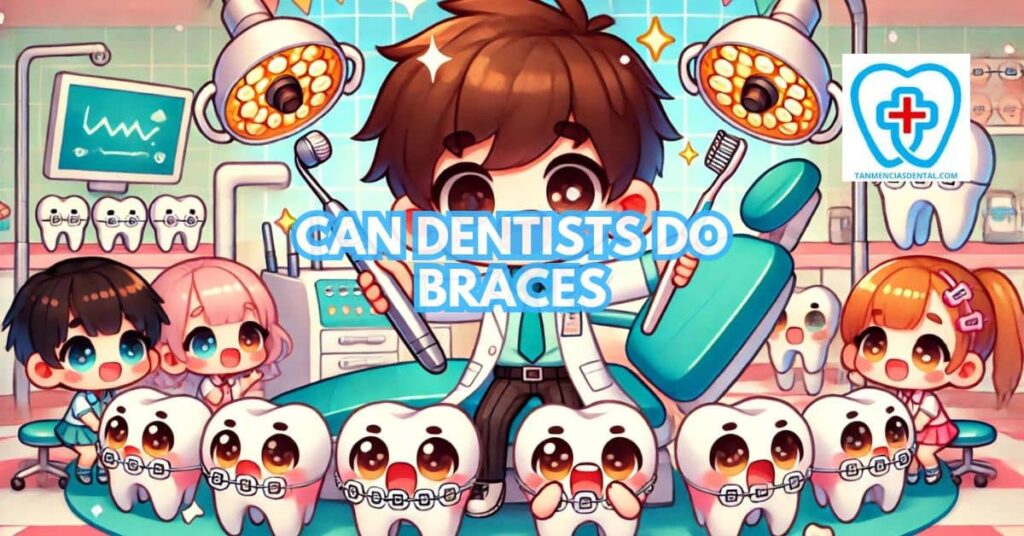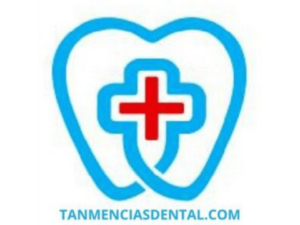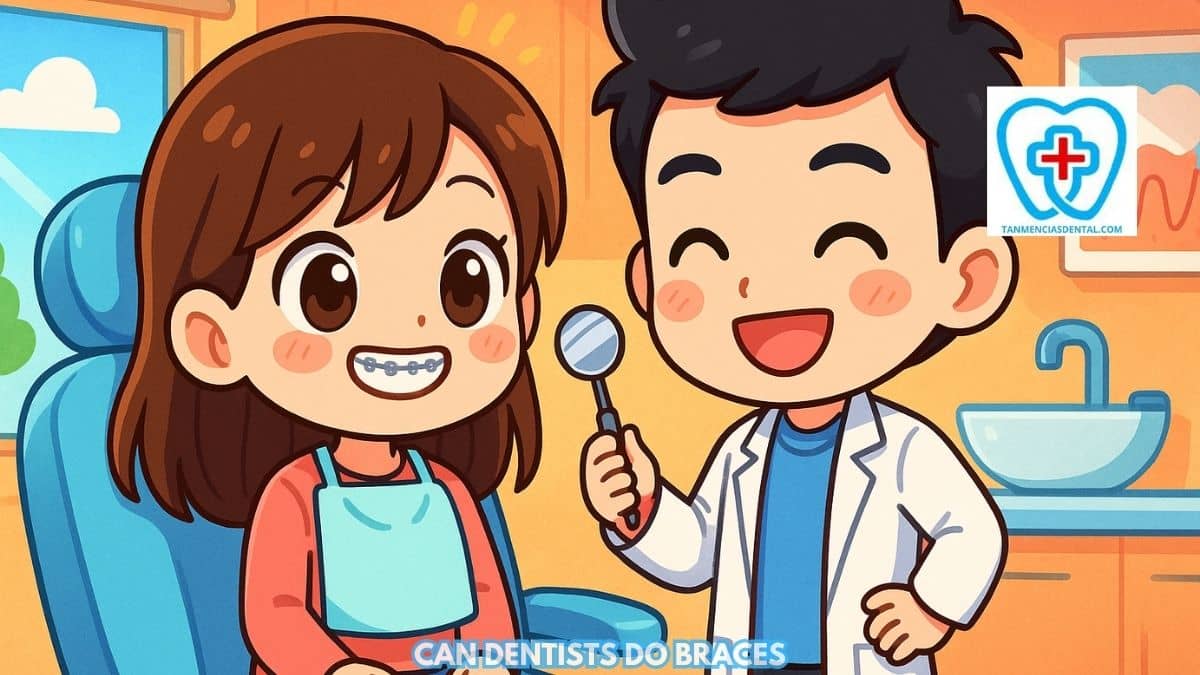Orthodontics and general dentistry both play important roles in keeping teeth healthy, but they focus on different needs.
A common question many people ask is, Can dentists do braces?
The answer is yes, some general dentists can provide braces or basic orthodontic care, while orthodontists handle more complex cases that require advanced training.
Knowing the difference between these professionals helps patients make the right choice for their dental goals.
Understanding who is best suited to provide braces ensures safer treatment, better results, and a healthier smile overall.
1. The Fundamental Difference Between an Orthodontist and a General Dentist
The main difference between an orthodontist and a general dentist lies in their education, training, and area of focus.
A general dentist provides essential care such as cleanings, fillings, crowns, and root canal treatments to maintain healthy teeth and gums.
They help prevent cavities, repair damaged teeth, and manage everyday dental problems that most patients experience.
Orthodontists, however, continue their education for several additional years beyond dental school to gain specialized training in tooth and jaw alignment.
This advanced training teaches them how to diagnose and treat complex bite issues using braces, retainers, and clear aligners.
Their work focuses on improving both the function and appearance of the teeth through careful movement and long-term planning.
While a general dentist may offer basic orthodontic services, orthodontists handle complicated cases that need detailed correction.
The two professionals often collaborate to make sure patients receive complete oral care that combines prevention, restoration, and alignment.
Understanding the difference between their roles helps patients choose the right expert for their specific dental needs.
🦷 Affordable Oral Surgery Options for Every Budget: Smile Without the Strain
2. Is a Dentist the Same as an Orthodontist? Clarifying the Confusion
Dentists and orthodontists both contribute to dental health, but in different capacities.
After completing dental school, an orthodontist undergoes further education and training to specialize in the alignment of teeth and jaws, distinguishing them from general dentists.
This specialization is focused on orthodontic treatment plans that involve complex movement of teeth and reshaping the bite, which general dentists typically do not perform.
Though both can diagnose and treat oral health issues, only orthodontists are trained in the planning and execution of orthodontic treatment strategies.
Understanding this distinction helps patients seek the appropriate professional for specific oral health needs.
🦷 How Can Dentists Help Athletes? Maximizing Athletic Performance
3. The Role of Orthodontic Treatment in Dental Health
Orthodontic treatment is a cornerstone of dental health, extending its benefits far beyond the pursuit of a symmetrical smile.
It addresses the root causes of misaligned teeth, which are often the culprits behind severe oral health issues such as gum disease, tooth decay, and the impairment of essential functions like chewing and speaking.
By straightening teeth and correcting misalignments, orthodontic treatment significantly enhances the functionality and durability of both teeth and gums.
Specialists who provide orthodontic treatment have specific braces qualifications, ensuring that each patient receives the highest standard of care tailored to their unique dental needs.
The correction of dental alignment not only contributes to a more attractive appearance but also plays a critical role in preventing or alleviating jaw-related pain and discomfort.
In essence, orthodontic care is a dual investment in the aesthetic appeal and the foundational health and functionality of the oral cavity.
Thus, it’s a pivotal component of comprehensive dental care, vital for maintaining both the beauty and the well-being of the mouth.
🦷 Why Buying Packs Of Toothbrushes Can Save You Money and Improve Hygiene
4. Why Experience Matters in Preventing Braces-Related Problems
Moving teeth too quickly or without proper planning can cause damage to the roots and gums.
Experienced providers use X-rays and regular checkups to make sure teeth are shifting safely.
Without close monitoring, issues such as gum recession, bone loss, or jaw pain can go unnoticed until they become severe.
Orthodontists receive additional training that enables them to identify small signs of trouble before they cause harm.
Choosing a skilled and trained professional helps keep your smile healthy and strong during and after treatment.
🦷 Are Dentists Doctors? Understanding the Title and Training

5. When to See an Orthodontist: Recognizing the Signs
Visiting an orthodontist is advisable when there are visible signs of alignment issues or when recommended by a dentist during routine checkups.
Common indicators include overcrowded teeth, excessive gaps between teeth, and difficulties with biting or chewing.
Early detection and treatment of these issues can prevent more serious problems and potentially reduce the time and complexity of future orthodontic treatment.
Orthodontists can also address aesthetic concerns that affect a person’s confidence and self-esteem.
Individuals need to seek consultation if they’re experiencing any discomfort or dissatisfaction with their dental alignment, as orthodontic treatment can offer both health and cosmetic benefits.
🦷 Can Tooth Decay Spread to Other Teeth?
6. Pediatric Dentists: Ensuring a Solid Foundation for Young Smiles
Pediatric dentists specialize in the oral health of children from infancy through the teenage years, focusing on developmental milestones and preventing or managing disease.
They are trained to address the psychological and physiological aspects of dental care for children, making visits positive and informative.
Early visits to a pediatric dentist can help in identifying potential orthodontic issues that may arise, allowing for timely referral to an orthodontist if necessary.
By educating families on proper oral hygiene and preventative care, pediatric dentists lay the groundwork for healthy dental habits that last a lifetime.
Their role is pivotal in ensuring that young patients grow up with strong, healthy teeth and a positive attitude towards dental care.
🦷 How Do Dentists Remove Braces Safely and Effectively?
7. Continuing Education: The Lifeline of Orthodontics and Dentistry
Continuing education is essential for dental professionals to stay current with the latest advancements in dental techniques, materials, and technology.
It ensures that dentists and orthodontists can provide the most effective and efficient care to their patients, adhering to the highest standards of the profession.
This ongoing learning can range from new methods of patient care to breakthroughs in orthodontic treatment options, like clear aligners and minimally invasive procedures.
Regulatory bodies often require dental professionals to complete a certain number of continuing education hours to maintain licensure, emphasizing its importance in professional development.
Through continuing education, dental professionals commit to lifelong learning, benefiting both their practice and their patients.
🦷 How Often Should You Get Routine Checkups At The Dentist?
8. The Collaborative Approach Between an Orthodontist and a Dentist
A strong partnership between orthodontists and general dental practitioners ensures that patients receive complete care for all their oral needs.
General dental clinics often serve as the first place where dental problems are noticed, allowing dentists to identify issues early and refer patients for specialized orthodontic treatment when needed.
Many dentists also offer orthodontic services for mild alignment cases, helping patients begin care close to home.
When more complex conditions arise, orthodontists take over to design and monitor advanced treatment plans.
Both professionals share patient records, X-rays, and treatment updates to make sure each stage of care is coordinated and effective.
This cooperation prevents confusion, reduces treatment delays, and improves the overall health of the mouth.
It also allows patients to manage both preventive and corrective care under the guidance of trusted experts.
Together, dentists and orthodontists create a smooth and well-organized path to better oral health for patients of all ages.
🦷 How Do Dentists Remove Tartar Buildup Effectively?
9. Understanding Braces and Other Orthodontic Devices
Braces, one of the most common orthodontic devices, are used to correct issues like misalignment, overcrowding, and bite irregularities.
Orthodontists tailor the type of braces or devices, such as traditional metal braces, ceramic braces, or clear aligners, to the specific needs and preferences of each patient.
Beyond braces, orthodontists may use retainers to maintain the teeth’s position after braces are removed or palatal expanders to widen the upper jaw in cases of a narrow palate.
The technology and materials used in these devices have significantly advanced, offering more comfort and efficiency during treatment.
Understanding the purpose and function of these devices helps patients become active participants in their orthodontic care.
🦷 How to Choose the Best Dental Care Center for Your Family
10. Keeping Your Smile on Track: Essential Post-Treatment Care for Braces
Keeping your smile on track after braces requires consistent post-treatment care.
Wearing your retainers daily, as instructed by your orthodontist, is essential to keep your teeth from shifting back to their previous positions.
It’s important to schedule regular checkups with your orthodontist so any slight movement or issues can be corrected before they become more serious.
In addition, maintaining excellent oral hygiene by brushing and flossing will help keep your teeth and gums healthy, reducing the risk of decay or gum disease.
To protect the time and money you invested in your braces, make sure to follow these care steps diligently.
🦷 Building Community Partnerships through Dental Checkup Camps
11. Preventive Measures in Orthodontics: More Than Just Treatment
Preventive orthodontics aims to reduce the occurrence of misaligned teeth and bite problems through early intervention.
Techniques such as space maintainers for prematurely lost baby teeth can prevent shifting and overcrowding, while early assessment allows for the identification of potential issues before they fully develop.
Educating patients on the importance of good oral hygiene practices and the impact of habits like thumb sucking on dental development is another key aspect of prevention.
By addressing issues early, preventive orthodontics can lead to shorter treatment times and less invasive procedures later.
This proactive approach not only enhances oral health but can also contribute to overall well-being and quality of life.
🦷 Basic Dental Needs in Marikina
12. The Future of Orthodontics and Dentistry: Innovations and Trends
The future of orthodontics and dentistry is being shaped by technology that improves accuracy, comfort, and accessibility.
New tools like digital scanners and 3D printing allow orthodontists to create custom braces or Invisalign aligners that fit each patient perfectly.
These methods reduce treatment time and make care more comfortable.
Professionals with advanced training in orthodontics are now using computer software to design treatment plans that predict tooth movement more precisely.
Robotic systems are also being tested to assist in placing brackets and adjusting wires for greater accuracy.
Teledentistry continues to grow, helping patients get expert advice and follow-up care from home.
Together, these innovations are creating a new standard for orthodontic treatment that is faster, safer, and more personalized.
🦷 Your One-Stop Dental Shop: Tan-Mencias Dental Clinic in Marikina
👨⚕️ Conclusion
Orthodontists and dentists play indispensable roles in maintaining and improving oral health, each bringing their specialized knowledge and skills to the table.
The collaboration between these professionals ensures that patients receive comprehensive care that addresses a wide range of dental needs, from preventive measures to complex orthodontic treatments.
As the fields of orthodontics and dentistry continue to advance, embracing new technologies and treatment approaches, the focus remains on providing patient-centered care.
This commitment to innovation, education, and collaboration is key to achieving the shared goal of healthy, functional, and beautiful smiles for patients of all ages.
Together, orthodontists and dentists are at the forefront of ensuring oral health, which is a cornerstone of overall well-being.
❔ FAQs
1. Can general dentists put on braces?
Yes, some general dentists can provide braces or basic orthodontic treatment if they have the proper training.
They can manage mild alignment problems and offer follow-up care.
More complicated cases are usually referred to an orthodontist for specialized treatment.
2. What is the difference between a dentist and an orthodontist?
A dentist focuses on keeping teeth and gums healthy through cleanings, fillings, and preventive care.
An orthodontist specializes in correcting crooked teeth and jaw alignment through braces or aligners.
Orthodontists complete extra years of training to handle complex tooth movements safely.
3. Why should I see an orthodontist instead of my regular dentist for braces?
Orthodontists are trained to handle difficult bite and alignment problems that may be too complex for a general dentist.
They use special tools and plans to move teeth safely and precisely.
Seeing an orthodontist can help reduce risks and improve long-term results.
4. Can getting braces from an inexperienced provider cause problems?
Yes, moving teeth without proper planning can lead to gum damage, bone loss, or root shortening.
Experienced providers use X-rays and regular checkups to track progress and catch problems early.
Choosing a skilled orthodontist or dentist helps protect your teeth and gums during treatment.
5. Are clear aligners as effective as braces?
Clear aligners can work well for mild to moderate alignment issues and are popular for their look and comfort.
However, traditional braces are often better for severe crowding or bite problems.
An orthodontist can determine which option will give you the best and safest results.
😁 Self-Promotion
Visit Tan-Mencias Dental Clinic in the heart of Parang, Marikina City, where we prioritize your smile and dental health with the utmost care and professionalism.
Our friendly team is eager to provide you with a comfortable and positive dental experience, using the latest techniques to ensure the best results.
For any questions or to schedule an appointment, feel free to call us at 0917-145-1074, send a message through our Facebook page, or use the contact form on our website.
We’re here to make your dental journey as smooth and pleasant as possible.
Let us be a part of your journey to a brighter, healthier smile at Tan-Mencias Dental Clinic!

